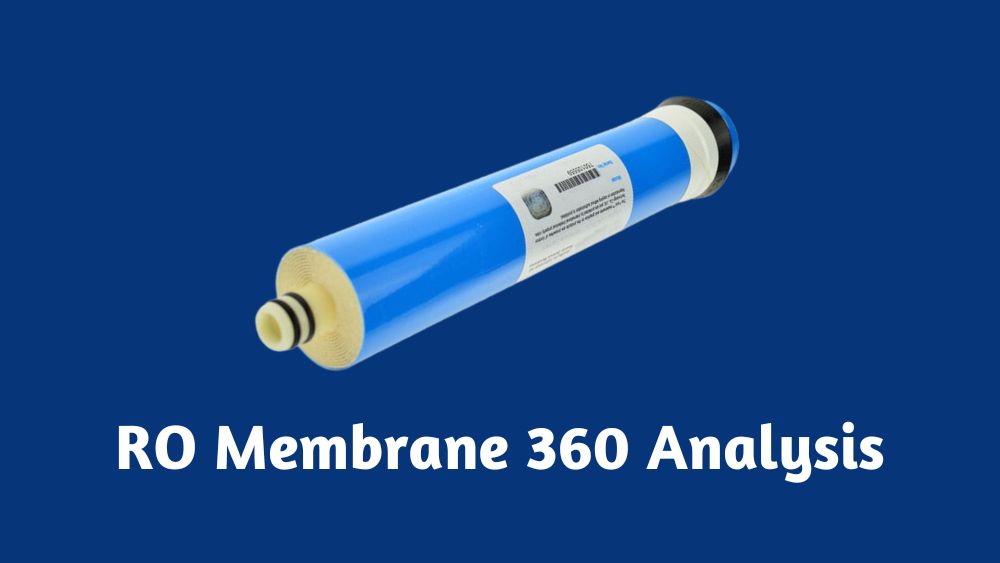Reverse Osmosis Membrane Filter
A RO, or reverse osmosis, membrane filter is a type of water filter that uses pressure to force water molecules through a very thin membrane. With reverse osmosis (RO) membranes, viruses, bacteria, algae, total dissolved solids (TDS), heavy metals, organic pollutants, and other dissolved contaminants are greatly reduced.
RO membranes are used in various applications, including home drinking water purification systems, commercial desalination plants, and wastewater treatment facilities.
A reverse osmosis membrane filter removes impurities from water. It comprises a thin, semi-permeable membrane that separates clean and dirty water. The reverse osmosis process forces the dirty water through the membrane, leaving the clean water on the other side.
How Does a Ro Membrane Work?
In the case of good-quality reverse osmosis membranes, the pores are 0.0001 microns in size. Booster pumps apply intense pressure to the RO membrane to force water through it. The membrane’s pores are 0.0001 microns. As a result, it traps substances and ions larger than the pore size.
The water molecules can pass through the pores in the membrane, while the larger molecules are blocked. This process is called reverse osmosis, and it is used to purify water.
Generally, RO Filter is the 3rd or 4th stage of the reverse osmosis system. Before the RO filter, there were sediment filters and one or two carbon filters. Sediment filters remove sediment and non-dissolved impurities from water. Carbon filter removes chlorine, bad gases, foul odors, etc.
After passing water from the sediment and carbon filters, the reverse osmosis membrane starts working. Generally, the higher the tap water quality, the longer the RO’s lifespan will be.
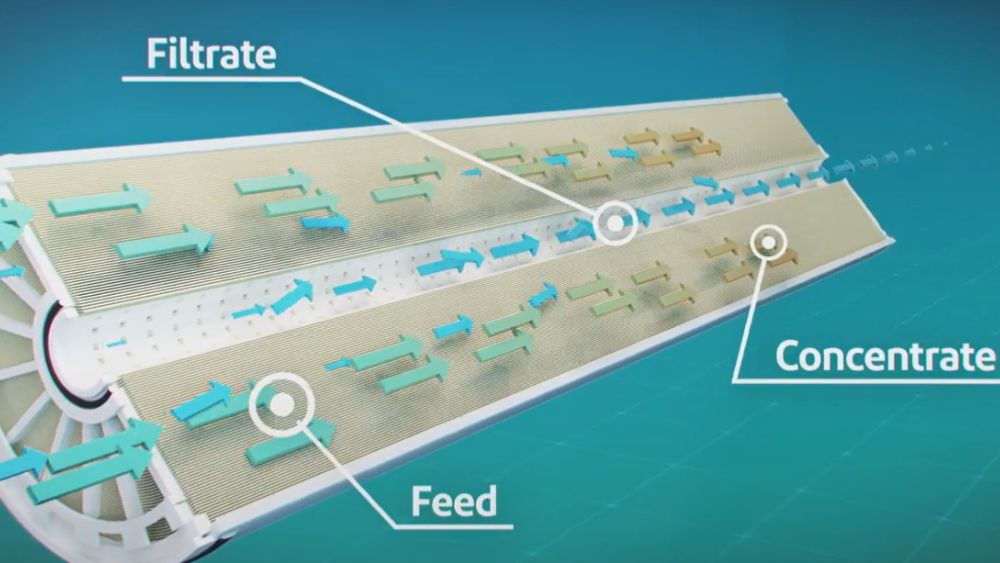
What are Membrane Filters Made of?
The membrane in RO water systems is a thin film composite (TFC-Thermoplastic) reverse osmosis. It is designed to remove dissolved solids, organic molecules, and larger particles from water. The TFC (thermoplastic) membrane is made of layers of polyamide material bonded together.
When water passes through the TFC membrane, most dissolved solids, organic molecules, and larger particles are removed from the water. This results in clean, filtered water that has had many impurities removed.
RO systems typically have a second stage of filtration after the TFC membrane to remove any remaining impurities before the water is delivered to your home or business.
In addition to membrane filters, it can use synthetic materials to manufacture them. Reverse Osmosis membranes can be prepared from various types of materials. These materials include-
- Thermoplastic
- Polytetrafluoroethylene (Teflon)
- Polypropylene
- Coated cellulose acetate
- Hydrophilic PTFE
- Cellulose nitrate (collodion)
- Polyamide (nylon)
- Polycarbonate
- Hydrophobic PTFE
- Polycarbonate
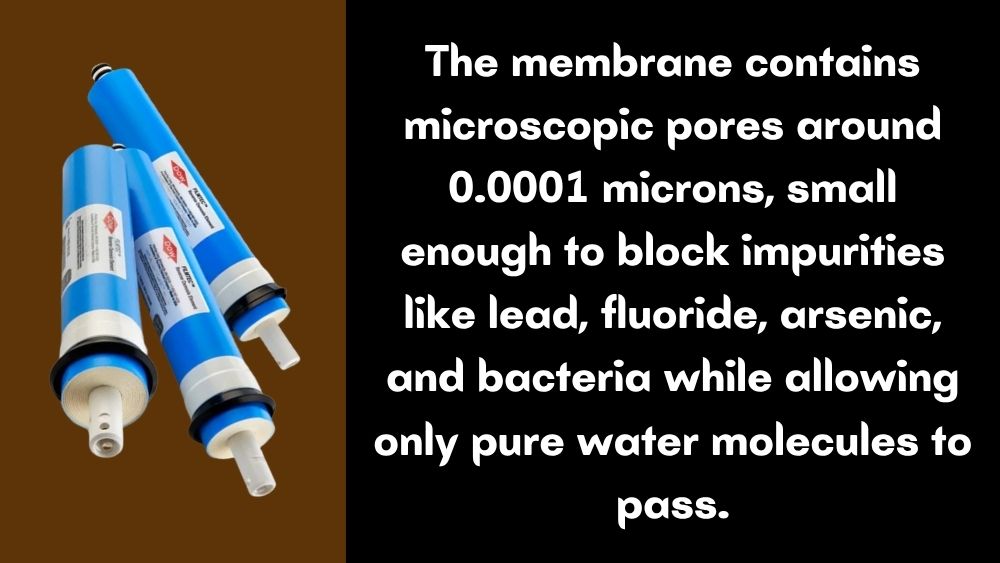
There are different types of reverse osmosis membranes, each with its characteristics. The type of membrane you choose will depend on the specific needs of your water treatment system.
The thin film composite (TFC) membrane is the most common reverse osmosis membrane. TFC membranes are made from various materials, including polyamide, cellulose acetate, and polysulfone. TFC membranes are solid and durable, making them ideal for high-pressure applications.
They also have a very high rejection rate (up to 99%), meaning they can remove a wide range of contaminants from water. Another common type of reverse osmosis membrane is the spiral wound (SW) membrane. SW membranes are made from two sheets spirally wound around a central tube. SW membranes have a lower rejection rate (up to 95%) than TFC membranes, but they can still remove many contaminants from water.
If you need a reverse osmosis membrane that can handle higher pressures or has a higher rejection rate, consider an asymmetric (AT) or low-pressure (LP) membrane. AT and LP membranes are made from two materials that are bonded asymmetrically. This gives them greater strength and durability than TFC or SW membranes.
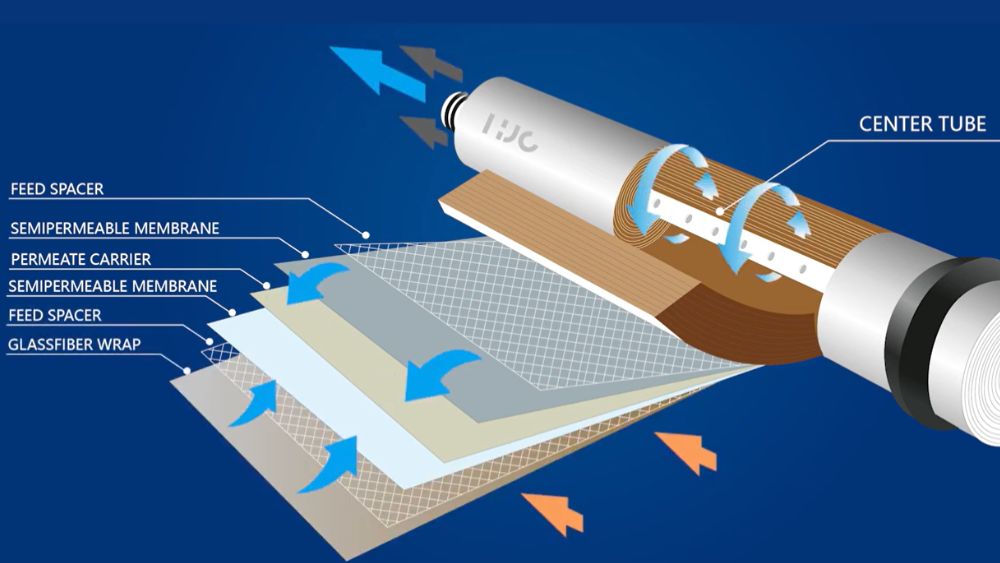
Gravity Filtration vs. RO Membrane
There are two main types of filtration: membrane and gravity filter. Both methods are used to remove contaminants from water, but they work in different ways. A gravity filter is not as effective as an RO membrane.
At gravity water filter, there is no need for electricity. Water flows from upward to downward with the help of soft gravity power.
- As a result of soft power, gravity filtration can not remove most of the contaminants.
- Gravity filtration can reduce only TDS from 5% to 10%.
- Water remains contaminated with heavy metals such as chlorine, Cadmium, Arsenic, Lead, etc., by gravity filtration.
- Using a germ cleaner gravity filter can kill harmful bacteria.
Membrane filtration uses a semipermeable membrane to remove impurities from water. RO system requires electricity to purify water. The water is forced through the tiny pores in the membrane, which trap the contaminants on one side while allowing the clean water to pass through to the other.
- RO membrane reduces TDS from 95% to 97%.
- Membrane filtration can be used for both drinking water and wastewater treatment.
- RO membrane removes heavy metals from the water like Lead, Arsenic, Cadmium, Chlorine, Iron, etc.
- RO membrane does not kill bacteria but traps bacteria in its tiny pores and filters out in the wastewater.
| Feature | RO Membrane Filtration | Gravity Filtration |
|---|---|---|
| TDS Reduction | 95% to 97% | 5% to 10% |
| Removal of Heavy Metals | Yes | No |
| Microorganism Removal | Filters out | Kills (with germ cleaner) |
| Pore Size | 0.0001 micron | 1 Micron |
| Electricity Requirement | Yes | No |
| Common Applications | Drinking water and wastewater treatment | Not as effective for heavy metal and microorganism removal |
| Bacteria Handling | Traps bacteria in membrane, filters out in wastewater | Killed by germ cleaner |
Uses of Membrane Filters
Membrane filters are highly versatile tools that find extensive use in a variety of industries due to their ability to remove tiny particles like viruses and bacteria from water effectively. These filters, which are known for their microscopic pores, serve critical roles in ensuring water quality and safety in the following applications:
Drinking Water Purification
Membrane filters are widely employed in the process of purifying drinking water. They act as a barrier to contaminants, effectively removing impurities and ensuring that the water is safe and clean for consumption. This is essential for public health and ensuring access to safe drinking water for communities.
Wastewater Treatment
In wastewater treatment, membrane filtration is a key technology. It is used to separate and remove impurities and pollutants from wastewater, making it suitable for discharge into the environment or potential reuse. This not only protects the environment but also conserves valuable water resources.
Pharmaceutical Manufacturing
In the pharmaceutical industry, where the utmost purity and quality of products are essential, membrane filters play a crucial role. They are used to achieve high-purity solutions by removing any microorganisms or particles that could compromise the quality of pharmaceutical products. This ensures that medicines and medical products are safe and effective for patients.
Food and Beverage Processing
In the food and beverage industry, the use of membrane filters is vital for maintaining the quality, safety, and consistency of products. These filters help remove contaminants, microorganisms, and particles that can affect the taste, appearance, and safety of food and beverages. This ensures that the products meet strict quality standards and are safe for consumption.
The beauty of membrane filters lies in their ability to provide a reliable and efficient means of water purification and particle removal across these diverse applications. Their microscopic pores, which can be as small as a few micrometers, make them capable of screening out even the tiniest impurities, such as bacteria and viruses. This is particularly crucial in industries where product quality, safety, and public health are paramount.
Choosing the Right Membrane Water Filter
There are many different types of membrane filters available on the market, so it’s essential to do your research to find the right one for your needs. Be sure to consider the size of the unit, the flow rate (how much water can be filtered per hour), and the membrane replacement schedule (which will need to be replaced periodically). With so many options available, you can find a perfect membrane filter for your home or office! The best quality reverse osmosis membrane includes-
- Pore size 0.0001 micron
- TDS (Total Dissolved Solid) reduction rate is 97%
- Daily water purification capacity of 50 to 100 Gallon Per Day (residential use)
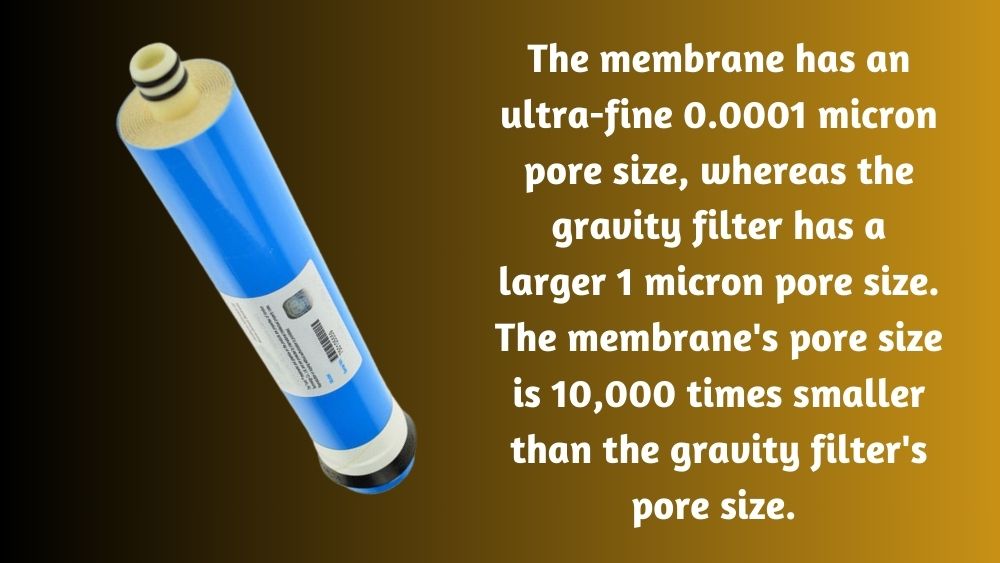
How Often Should You Replace a Membrane Filter?
Reverse Osmosis membranes need to be replaced every two to three years. However, the quality of the source water determines its lifespan. Additionally, the RO membrane will last longer if the sediment and carbon filters are changed on time. Conversely, if your water output suddenly drops, it is a sign that at least one of the filters isn’t working properly.
How Long Does Ro Membrane Last?
It is estimated that the average RO membrane will last for 3-5 years when properly maintained. However, several factors can contribute to a shorter lifespan, such as frequency and intensity of use.
- The quality of the water being filtered
- The type of RO system
- Proper maintenance and care
When it comes to frequency and intensity of use, commercial systems tend to experience more wear and tear than residential ones. This is because they generally operate longer and filter larger volumes of water. Additionally, the quality of the water being filtered can shorten an RO membrane’s lifespan.
If the water is particularly dirty or contains high levels of dissolved minerals, it can put greater stress on the membrane, causing it to break down faster. A few different types of RO systems are available on the market today. Some models (such as those with spiral wound membranes) are designed for higher capacities and can withstand more frequent use.
Others (like those with thin film composite membranes) may be less durable but offer better filtration performance. Ultimately, the type of system you have will affect how long its membrane lasts. Of course, proper maintenance is essential to prolong any RO system’s life – including its membrane.
Regular cleaning and replacement of filters can help remove contaminants that could damage the membrane over time. Additionally, investing in a good-quality pre-filter can help protect your RO system from sediment and other particles that could clog or damage it.
Why Should you not Clean the RO Membrane?
You have to understand that attempting to clean an RO membrane is not recommended. Cleaning the membrane can actually reduce its effectiveness and may lead to poorer water purification results. Opening or tampering with the membrane can compromise its ability to filter water properly, which means you may end up with water that still contains impurities.
Final Words
In conclusion, reverse osmosis membrane technology benefits water treatment plants. These include reducing the amount of water needed to be treated, improving water purity, and providing more consistent and reliable service. Reverse osmosis membrane technology can be a cost-effective way to improve the quality of water for users across the globe.

Hasan Al Sarker is a Reverse Osmosis Specialist. He has worked for many years to ensure safe drinking water for all. His research paper has been published in several journals, including Issue, Medium, and Slideshare. He is recognized as a water doctor among specialists though he did not attend medical college.
Besides working as a researcher of reverse osmosis technology, he is also very fancy with the kitchen and cooking. His guides are reading thousands of people every day. As a head of content, he is responsible for all the published articles at RO System Reviews.

